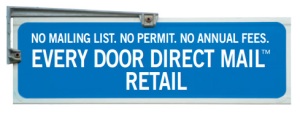 It’s now becoming easier to select who should mail your letters and ship your packages.
It’s now becoming easier to select who should mail your letters and ship your packages.
On April 10th, the US Postal Service will reduce rates by an average of 4.3%. The 1-oz postage stamp goes from 49 cents to 47 cents.
And that’s great news for consumers.
But the real news is how UPS and FedEx rates have been steadily increasing.
In January, UPS and FedEx both increased rates by an average 4.9% .
And like the airlines that now charge for snacks, they’ve both increased or added fees for all sorts of other things, too.
Your box bigger than X inches? There’s a fee for that.
Address needs correction? There’s a fee for that.
Mailing to a residence or an ‘extended’ location? There are fees for that.
In addition, since January, UPS has added a whole new 2.5% surcharge for 3rd Party shipments — packages shipped on one account but billed to another.
So now, according to the PANC Group, these “accessorial” fees can account for up to 33% of shipping expenses.
Adding more salt to the wound, both FedEx and UPS have not yet lowered their fuel surcharges. These surcharges were created when gasoline costs were approaching $4 per gallon.
Even as gas slips below $2 per gallon, FedEx and UPS are still raising these surcharges.
So where does the Postal Service stand after all of these price contortions? The clear winner.
To see how rates compare, check out the infographic below published by Endicia earlier this year.
A small, 13-oz box (8″x 6″x 4″) traveling from Minneapolis to Chicago, costs over $12.50 with UPS and FedEx Ground. Or spend just $3.50 with USPS 1st Class.
A 12″x 10″x 6″ package going from Seattle to Atlanta costs over $16 with UPS and FedEx Ground, but just $10.77 with USPS Priority Mail. While UPS and FedEx would get the box there in 5 days, with USPS, it takes just 2-3 days.
Granted, if you’re shipping big, heavy boxes, you should stick with UPS, FedEx and the trucking companies. USPS becomes pricey as the shipment gets bigger.
But if you’re mailing envelopes and small packages, then you should consider the USPS as your go-to shipper.
Because the last thing you need is to feel boxed in.

Infographic published by Endicia, January 2016.






